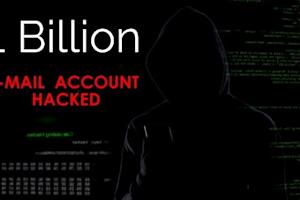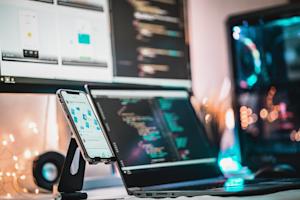Cyber threats are always growing and adapting, so our cybersecurity measures need to evolve as well. One of the most common and effective ways to secure user accounts is through multi-factor authentication (MFA) security, which adds another level of protection when users log in.
So, what makes MFA security so essential for cybersecurity in 2025? Let’s explore how it enhances security, protects against cyber threats, and strengthens protection when you access your devices and accounts.
What is MFA Security?
MFA security is an IT security technology that uses multiple factors to authenticate users. Typically, this is used in conjunction with passwords and requires a secondary credential, such as verification via an authentication app, security tokens, or biometric verification.
Think of MFA security as a second level of authentication that backs up a password. While passwords can be lost or stolen, MFA creates a more robust defense by adding an additional barrier for hackers or other malicious actors.
Why MFA Security is Becoming the Ultimate Defense Against Cyber Attacks
MFA is designed to reduce the risk of cyberattacks. It goes beyond passwords by requiring an extra layer of authentication that’s far more difficult to steal or replicate.
While passwords remain an essential part of any security strategy (including strong password security and best practices, such as using unique passwords with a combination of letters, numbers, and symbols), passwords alone aren’t enough. MFA security makes it harder to break into accounts even when their passwords are compromised.
For instance, say a user’s password is stolen, and the thief attempts to log into their account. Without MFA, the thief is granted access, and the entire network is now in danger. With MFA, the account’s owner receives a phone notification asking to verify that they’re logging in. Then, they can not only block the login attempt, but also quickly change their password so the stolen one is no longer useful.
As such, multi-factor authentication is a powerful tool for preventing phishing, credential theft, and unauthorized access. Given that stolen credentials and phishing are among the most common ways cybercriminals access an organization, that extra level of security goes a long way to protect accounts.
The Critical Role of MFA in Securing Remote Workforces
With that in mind, what are the benefits of implementing MFA security?
First and foremost, strong cybersecurity is a benefit in and of itself. While the rise of remote work and bring-your-own-device (BYOD) has been great for employees and productivity, it’s also provided more opportunities for cyber criminals. It’s more imperative than ever to ensure accounts remain secure with multiple layers of protection.
Implementing multi-factor authentication helps mitigate threats, including unauthorized access, phishing, and credential theft. While passwords can be stolen, biometric data, secondary devices, and security tokens are far more difficult to steal while still being easily accessible to their owners.
As a result, multi-factor authentication can significantly improve an organization’s cybersecurity. This helps ensure compliance with industry regulations, which is vital for meeting modern security standards and avoiding fines for lax security.
Without proper MFA security, organizations leave accounts vulnerable, which could have dire consequences. If a hacker or other bad actor breaks into an account, it could result in significant data breaches and damages, not to mention the loss of trust and reputation that follows.
The Growth of MFA Security: Market Insights and Adoption Trends
Now that we’ve established the value of MFA security, it’s time to look at growing trends and the future of multi-factor authentication.
First, let’s look at the companies using MFA security. According to research by JumpCloud, 87% of companies in the technology industry have implemented multi-factor authentication. It’s also more common in larger companies, with another 87% of firms with over 10,000 employees using MFA. This percentage drops significantly as businesses get smaller, as only 34% of medium-sized organizations and 27% of small businesses use multi-factor authentication.
While MFA security can take many forms, the most common version is via software solutions. If, for instance, you’ve ever had to use the Google Authenticator or Microsoft Authenticator app, then you’ve used an MFA security application. Only 4% of employees use hardware-based MFA, while just 1% use biometrics. That leaves the remaining 95% using software and apps.
The most shocking statistic demonstrates the value and effectiveness of MFA security. When accounts are compromised, over 99% of the impacted accounts don’t have MFA enabled! The numbers don’t lie: multi-factor authentication can significantly improve account security.
7 Reasons Why IT Leaders Must Prioritize MFA Security in 2025
If you’re an IT leader, why should you prioritize multi-factor authentication? Given the value of strong cybersecurity and the effectiveness of MFA in preventing cyberattacks, multi-factor authentication is no longer just an option — it’s essential.
1. Passwords Are No Longer Enough to Strengthen Security
While passwords were once the first and only line of account security, they’re insufficient for properly protecting business accounts. Hackers have several ways to steal passwords, including phishing scams, spyware, and brute-force attacks. Organizations need an additional layer of security to verify user identities, in case anyone’s password is compromised.
2. Blocking Phishing Attacks with MFA
Phishing attacks are among the most common ways to steal passwords. While knowing how to prevent phishing is vital, multi-factor authentication also serves as a second line of defense should an employee lose their password or credentials to a phishing account. Phishing can cost someone their login information, but it can’t steal their phone or biometrics.
3. Securing Remote Work and Cloud Applications with MFA
While employees and businesses are embracing the benefits of remote and hybrid work, which are made all the easier by the accessibility of cloud technology, they still need to ensure that users can securely access their work and technology from anywhere. MFA security helps with this by providing users with a way to verify their identities when they log in remotely.
4. Ensuring Compliance: How MFA Meets Industry Regulations
Many industries have strict security requirements, such as GDPR, PCI DSS, and HIPAA compliance. Securing and protecting accounts with multiple layers of security is an important part of many industry and government regulations, so MFA security is essential for IT compliance.
5. Reducing Identity Theft Risks with Strong Authentication
Multi-factor authentication helps users protect their identities by requiring multiple forms of verification. When a hacker or other cyber attacker tries to steal a user’s personal information, requiring additional information like a code from an outside app or biometric identification helps keep them at bay and safeguards user identities.
6. Safeguarding Financial Transactions with MFA Security
Protecting financial information, whether it’s a customer transaction or banking information, is vital. Multi-factor authentication requires users to provide additional verification before processing financial transactions, so cyber criminals can’t make fake purchases on their accounts or steal their financial information.
7. Enhances Trust and Customer Confidence
Customers want to know that their accounts and information are safe. Using tools like multi-factor authentication demonstrates a commitment to security and assures customers their accounts are protected, thus enhancing trust and confidence.
Best Practices for Implementing MFA Security in Your Organization
If you want to implement MFA security, there are some best practices you can follow. These will help ensure you’re fully securing accounts without compromising ease of access:
Monitor and report: Monitoring systems is one of the most important things you can do for security. This helps detect unusual behavior and potential threats, so you can address them quickly. Regular reporting also helps ensure you’re meeting your regulatory requirements and can better track user activity.
Update regularly: Technology is always advancing, and your security policies need to develop alongside it. Make sure you update not only your security solutions, but also your policies to ensure you’re meeting your security requirements.
Use contextual controls: Adding context-aware access controls provides even more security to your MFA solution, as it can identify suspicious factors like user location, time, or device to monitor for unauthorized access attempts.
Find the right authentication methods for your business: There are many different kinds of authentication methods, and while software and apps are the most common, they’re not the only kind. Some organizations may find it easier to use another method, such as security tokens or biometric identification, so it’s important to pick the best method for your business.
Integrate MFA with existing security: MFA security works best when used in combination with existing security tools, rather than as a standalone. Make sure you combine it with your current security protocols for the most effective and efficient security.
How Splashtop Elevates Remote Access Security with Powerful MFA Protection
Multi-factor authentication is a key part of Splashtop’s secure remote access and IT support software. Users can enable MFA on an authenticator app (such as Google Authenticator, Okta Verify, or Microsoft Authenticator), requiring an additional security code every time they log in. This ensures that users can protect their accounts even if they lose their passwords.
Of course, that’s not Splashtop’s only security feature. Splashtop also includes multiple advanced security features, including multi-level password security, remote connection notifications, logging, and more.
Splashtop empowers employees and IT agents to access their work computers from any device, anywhere.
This is an amazing tool for remote and hybrid work, as it ensures employees can always access their work and IT teams can trou bleshoot and manage devices from anywhere. Naturally, Splashtop also recognizes the importance of security when accessing devices remotely, which is why its solutions are built with security at the top of mind.
Splashtop is fully compliant with a wide range of industry and government regulations, including ISO/IEC 27001, GDPR, SOC 2, HIPAA, FERPA, and more. Accounts are protected with multiple levels of security, including mandatory device authentication, end-to-end encryption, and two-factor authentication, keeping remote devices safe every step of the way.
Want to work from any device, anywhere, with security and confidence? You can get started today with a Splashtop free trial:





